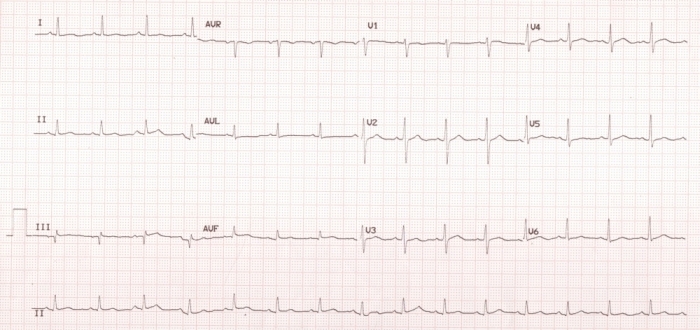12 Lead ECG
12 Lead ECG
Standard 12 lead ECG consists of 6 precordial leads, 3 conventional limb leads and 3 augmented limb leads. Ideally electrocardiographic data from all the 12 leads should be simultaneously acquired to be called as a 12 lead ECG. Some electrocardiographs acquire 3 channels simultaneously while still others record leads sequentially in a single channel. The advantage of simultaneous multichannel acquisition is that any beat can be analyzed in all the channels. This makes analysis of complex arrhythmias easier.

Standard limb leads are: Lead I (left arm positive, right arm negative), Lead II (left foot positive, right arm negative) and Lead III (left foot positive, left arm negative). In augmented leads, the positive pole is the index limb while the negative terminal is derived from the other two limbs. The positive pole of aVR is the right arm, that of aVL is left arm and that of aVF the left foot. Right foot is connected as a ground electrode during all electrocardiographic recordings.
The chest leads are theoretically unipolar recordings with all the three limb electrodes contributing to the central terminal. They are named V1 to V6 or C1 to C6. V1 is placed in the 4th right intercostal space close to sternum and V2 on the corresponding location on to the left of the sternum. V4 is in the 4th left intercostal space in the midclavicular line, while V3 is positioned midway between V2 and V4. V5 and V6 are positioned in the same horizontal level as V4, in the anterior axillary line and mid axillary line respectively.
Even though not part of the standard 12 leads, V7, V8 and V9 are sometimes recorded along the same horizontal line, in the posterior axillary line, scapular line and paraspinal region respectively. Right sided chest leads are recorded in the corresponding sites on the right hemithorax and named as V3R, V4R etc.


